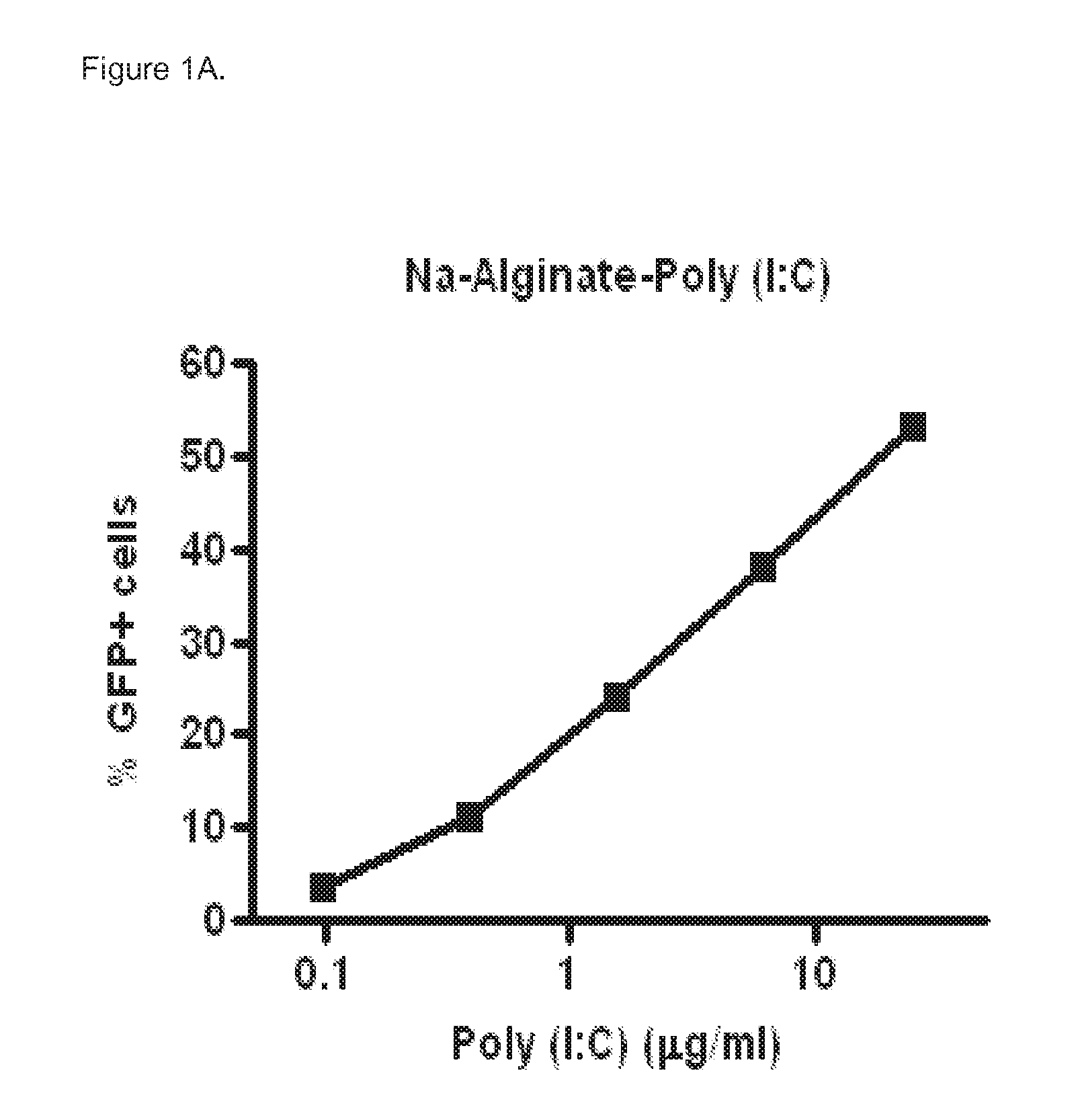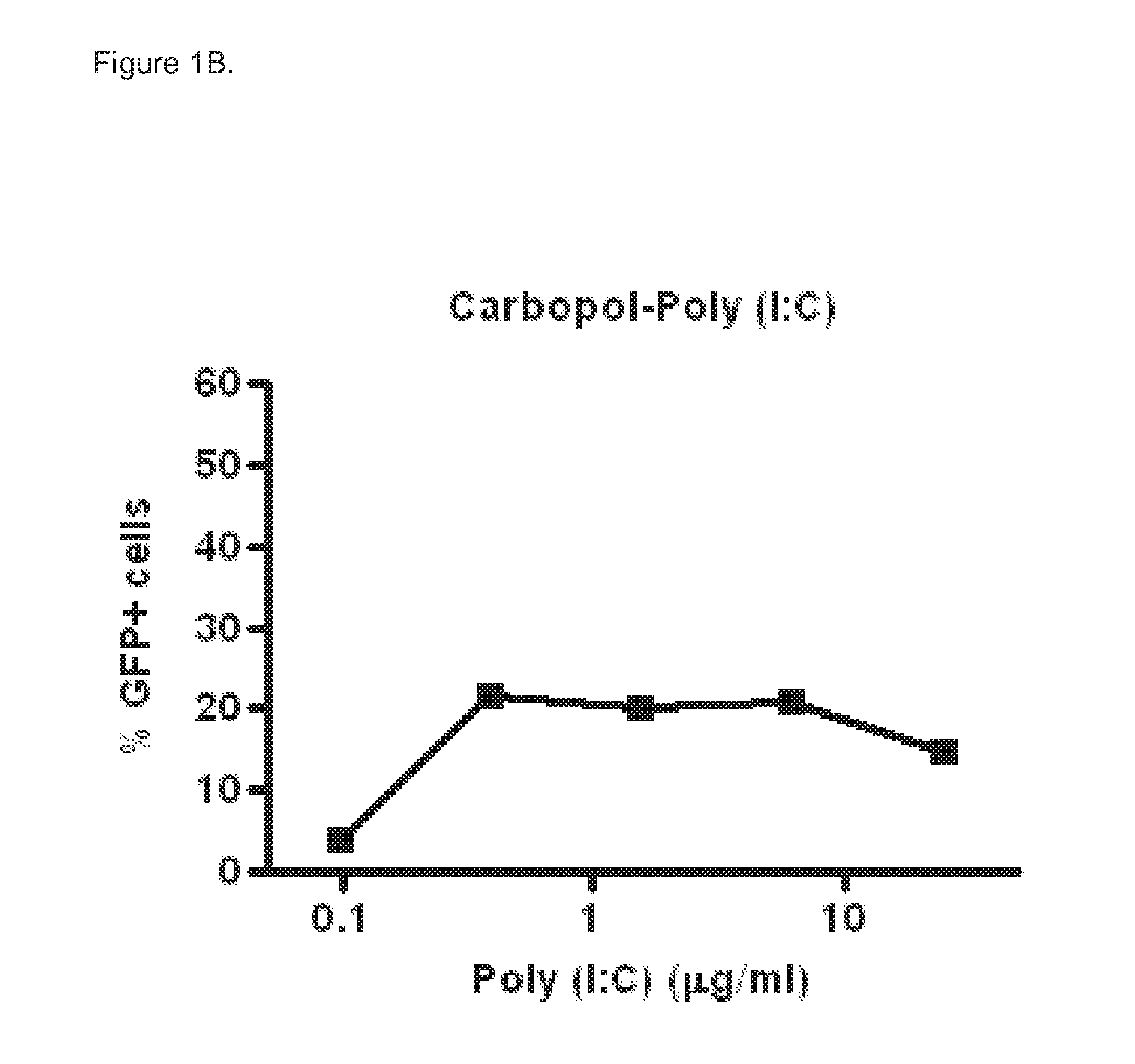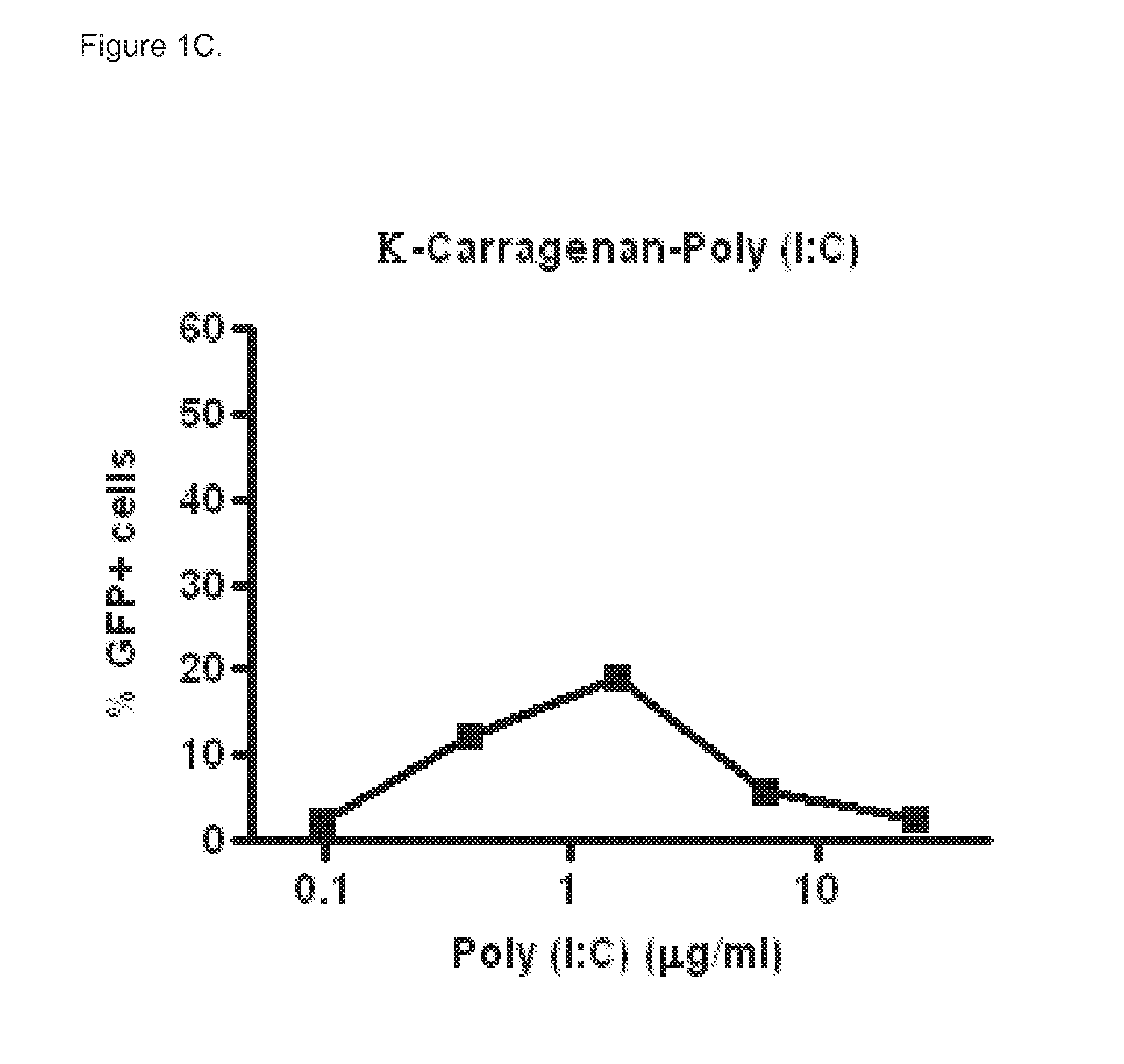Polyinosinic-polycytidylic acid (poly (i:c)) formulations for the treatment of upper respiratory tract infections
a technology of polycytidylic acid and polyinosinic acid, which is applied in the direction of gene therapy, biochemistry apparatus and processes, pharmaceutical non-active ingredients, etc., can solve the problems of difficult laboratory growth, less well-understood significance, and inability to gain complete immunity to the common cold
- Summary
- Abstract
- Description
- Claims
- Application Information
AI Technical Summary
Benefits of technology
Problems solved by technology
Method used
Image
Examples
example 1
In Vitro Biological Activity of Poly (I:C)
Materials & Methods
[0066]Polyinosinic-polycytidylic acid sodium salt (Poly (I:C). Midland Certified Reagent Company Inc (Texas, USA), lot 020905, partially pregelatinized maize starch, Stada AG (Bad Vilbel, Germany), lot 93301-9628, Sodium carboxy-methylcellulose (Blanose 7MF), Ashland Aqualon (Wilmington, Del. USA) lot 3-30172, Dipalmitoylphosphatidylcholine (Lipoid PC 16:0 / 16:0), Lipoid GmbH (Ludwigshafen, Germany), lot 563098-01 / 049, Lactose monohydrate (#316 Fast Flo). Foremost (Banaboo, Wis., USA), lot 8509052261. Sodium alginate (Protanal LF10 / 60LS), FMC Biopolymer (Drammen, Norway), lot S19616, Absolute ethanol Chem-Lab (Zedelgem, Belgium), lot 17.2712904.400
In Vitro Biological Activity of Poly (I:C)
[0067]Poly (I:C) sensitive A549 cells (carcinomic human alveolar epithelial cells) were infected with a vector that contains the long IFN-β1 promoter (chromosome 9 from position 21069463 to 21067869), coupled to the Green Fluorescent Prote...
example 2
Generation and Characterization of Poly (I:C) Micro Particles
[0068]Spray drying of Poly (I:C) with carrier polymers
[0069]The Alginate, CMC (Blanose) and partially pregelatinized maize starch spray dry process was performed on a B90 Nano spray dryer and on a Buchi B290 Mini spray dryer (Buchi, Flawil, Switzerland). In general, spray drying experiments with the B90 Nano spray dryer resulted in poor yields due to the high viscosity of the solutions. Demineralized water was filtered using a 0.2 micron cellulose acetate filter (Whatman FP30 / 0.2 CA-S) and added to a glass beaker The excipients were added while stirring using a magnetic stirrer. When completely dissolved, Poly (I:C) was added to the solution. A total solids concentration of 0.5% (w / w) and a ratio of Poly (I:C) / excipient 1 / 9 (w / w) was applied for all concepts. Compositions of the feed solutions are listed in Table 1A.
TABLE 1AFeed compositions of Alginate, CMC and partiallypregelatinized maize starch conceptsQuantity (g)part...
example 3
In Vivo Testing of Formulations in the Influenza Mouse Model
[0081]All animal studies were approved by the ethical committee and performed according to national and international guidelines. 8-12 week old female Swiss mice (Janvier) were used. All intranasal treatments were performed under isoflurane anesthesia. To administer an amount of liquid, a droplet was applied directly on top of the nostril and, by closing the mouth, the droplet was allowed to enter via the nostril into the nasal cavity. Spray dried Poly (I:C)-carrier powders were freshly prepared just prior to each experiment and administrated in 15 μl liquid. Unformulated Poly (I:C) was administrated in phosphate buffered saline (PBS) at a concentration of 1 mg / ml. Pretreatment was typically performed on day 2 or 3 before challenge. The mice were challenged on day 0 with 10×LD90 mouse adapted H1N1 PR (FLU PR 1600517) in 25 μl (high volume challenge) or with 1×LD90 in 15 μl (low volume challenge). Following the challenge, mi...
PUM
| Property | Measurement | Unit |
|---|---|---|
| average molecular weight | aaaaa | aaaaa |
| particle size | aaaaa | aaaaa |
| particle size | aaaaa | aaaaa |
Abstract
Description
Claims
Application Information
 Login to View More
Login to View More - R&D
- Intellectual Property
- Life Sciences
- Materials
- Tech Scout
- Unparalleled Data Quality
- Higher Quality Content
- 60% Fewer Hallucinations
Browse by: Latest US Patents, China's latest patents, Technical Efficacy Thesaurus, Application Domain, Technology Topic, Popular Technical Reports.
© 2025 PatSnap. All rights reserved.Legal|Privacy policy|Modern Slavery Act Transparency Statement|Sitemap|About US| Contact US: help@patsnap.com



